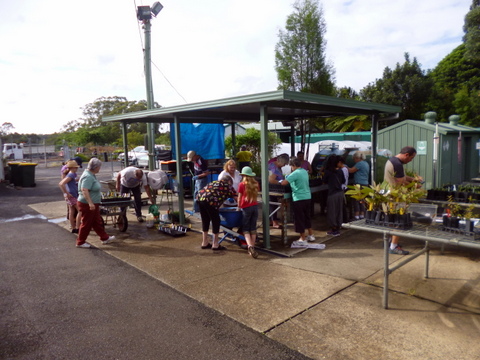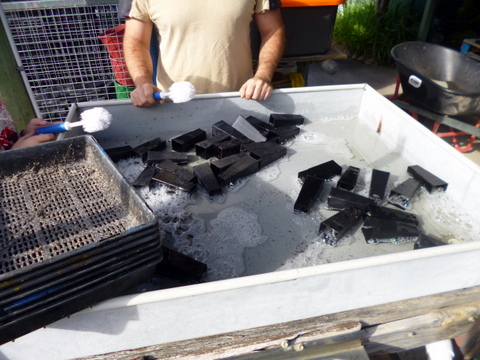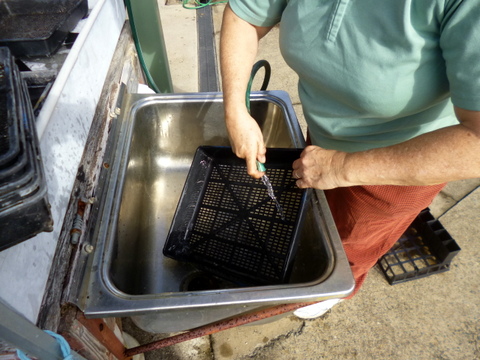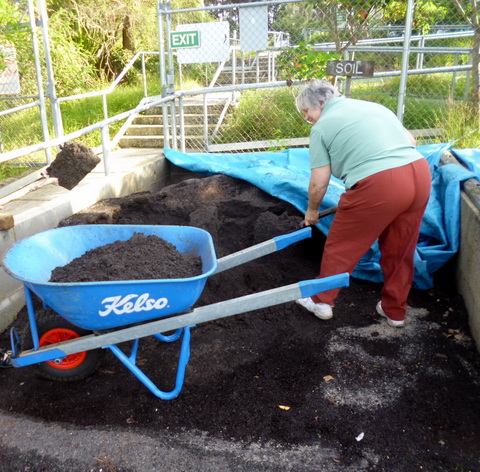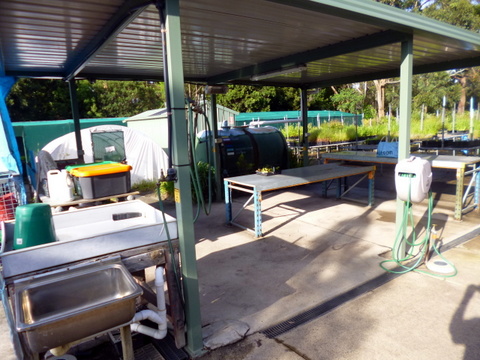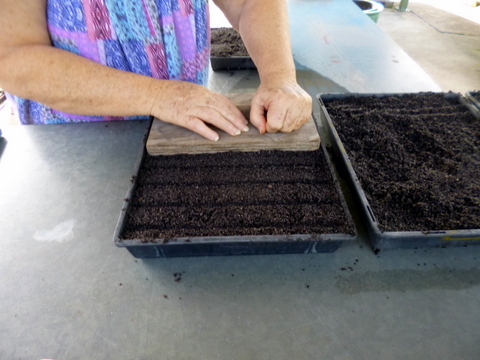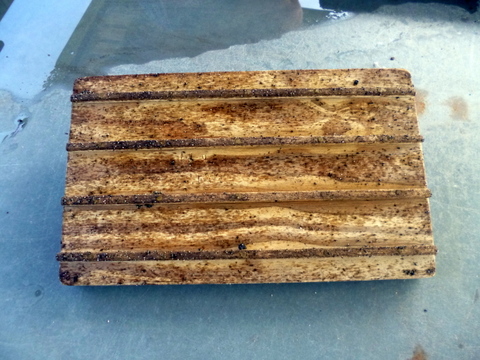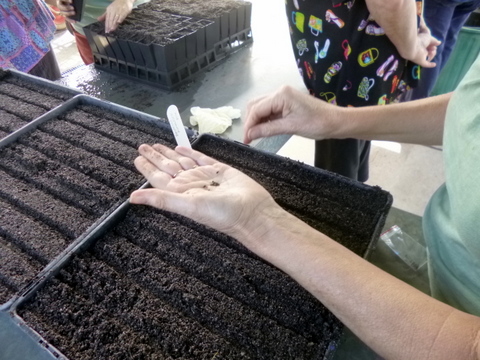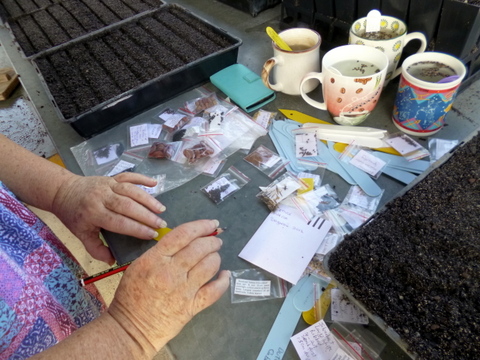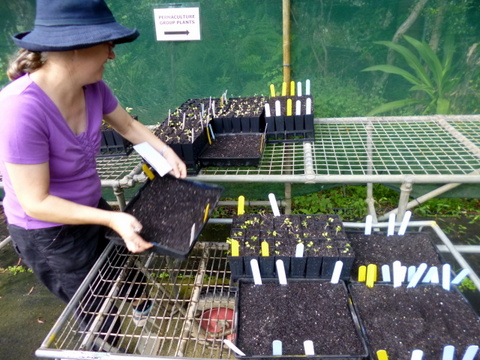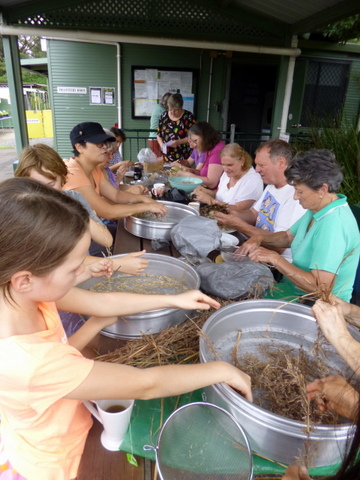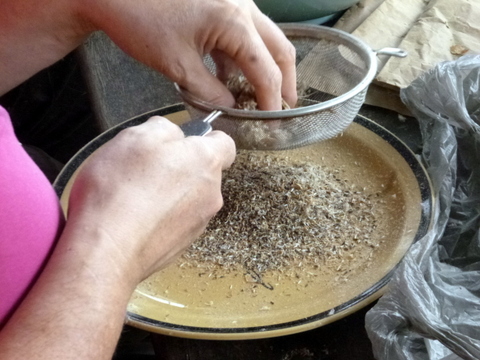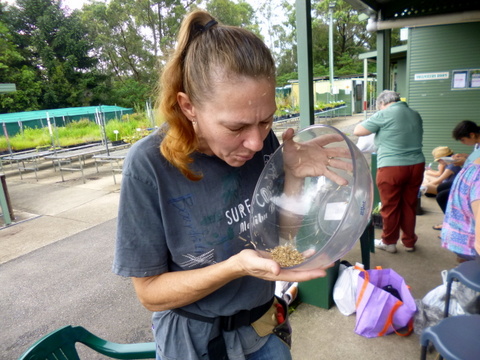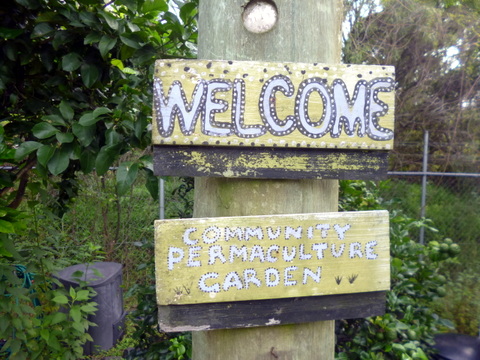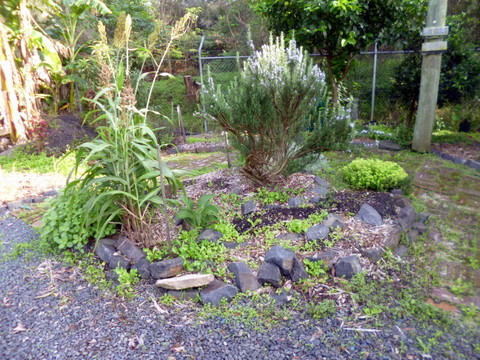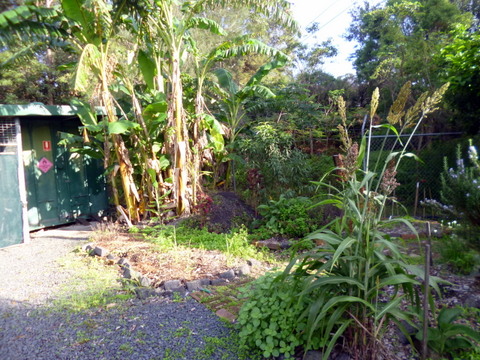There are a whole stack of reasons why it is good to have a seed savers group or activity associated with a Permaculture group –
- Members will have access to local, open pollinated seed.
- You’re not giving money to international conglomerates trying to control the world’s seeds.
- You help to develop and maintain local varieties of fruit and vegetables.
- Members learn to save their own seed.
- Local seed banks can supply organic seeds until you are willing or able to save your own seed.
- The number of varieties can be maintained and expanded for fruit and vegetables
- Money fed back into the permaculture group can be used to fund permaculture related projects.
In our case, the Seed Savers group existed prior to the formation of Permaculture Sydney West. This meant that a group did not need to be set up later and so, access to Seed saves became an immediate advantage of membership.
When starting a seed saving group, particularly when the aim is to provide for a group such as a permaculture group, it is initially, difficult to provide the number and variety of seed required. In the early stages, and this was true for the PSW seed bank, an option would be to buy open pollinated seed for a reputable source such as Eden Seeds, Green Harvest, or Phoenix seeds.
Start up
Our seed savers group meets on the fourth Saturday of the month from 9:00 am to 1:00 pm at a community nursery which was set up by The Hills Shire Council in Ted Horwood Park, Baulkham Hills. To have access to the Seed Saver Group, you need to be a member of PSW.
The nursery, called Bidjiwong, has
- space
- facilities - work tables, cleaning apparatus, sinks, sheds, greenhouses
- consumables - soil mix, tubes, seed trays and flats for planting.
These are all available to PSW free of charge.
Bidjiwong’s main focus is to supply native plants to
- Council - planting schemes
- residents - 4 free plants per year.
PSW swaps food plants with the Council group running the nursery, in return take some of the natives e.g. when they have been propagating bush tucker.
Usual attendance is between 19 and 24 members. It is particularly enjoyed by those PSW members who are unable to attend the monthly general meetings in the evening.
Typical morning at Seed Savers
For insurance purposes, everyone must sign in on arrival and sign out when they leave. On arrival our seed ladies unload the seed saving materials and gear:
- sieves
- small plastic bags to package the seeds for sale
- plants, seeds and fruit for seed extraction
- labels/instruction to be included in the seeds for sale.
These are placed on the seed saving benches, under the covered area.
All the plants in the shade house, which were sown / propagated the previous month, are inspected. Any that are excess of those required for projects are available for take home by members or taken along to the next general meeting to be sold.
Hygiene
The nursery has a well-designed hygiene station, where the flats, tubes and anything else which is to be re-used can be washed, disinfected and rinsed. In this way, disease organisms like those responsible for damping off are removed before they can become a problem.
The hygiene station has two trays or troughs, the first and larger trough is filled with water plus a small amount of detergent and household disinfectant. All materials are washed here. This is a great place for kids who come to Seed Savers. The tasks here are easy and they can splash about with the water while still performing a useful task. From the first larger sink, the washed flats and tubes go to the smaller sink, where any residual detergent and disinfectant is rinsed off.
The washed materials are placed in the sun to dry, and once dry, ready for use.
All the water from the hygiene station is captured and re-used later in the process.
Sowing and potting on
Filling the Flats and Tubes
The soil mix put together by the nursery staff is available for use by the Seed Savers group, but it is designed for natives and so is not particularly rich in nutrients, especially phosphorus. Vegetables require a more nutrient dense mix, so the potted seedlings are given a liquid feed of seaweed or fish emulsion to keep them going. Also, at this point, any seeds which need to be soaked before sowing are placed into cups of water.
The soil is shovelled from the stockpile into a wheelbarrow, taken over to the propagation area and used to fill all of the flats and tubes used for sowing seeds and potting on. Cleaned flats and tubes (with holders) are taken over to the propagation area and filled with soil mix, ready for the people sowing or potting on. The flats are tamped down to flatten and consolidate the surface.
The device used to do this is a flat piece of timber with a handle on one side and ridges on the other. As you press this down, the surface is flattened and furrows are formed, ready to receive the seeds.
Anyone not on the cleaning team now gathers around the propagation benches. The seeds to be sown have been selected (under the watchful eye of our principle seed lady) and helpers are instructed as to correct placement of the seeds (depth, spacing). One person is responsible for labelling to make sure no sown flats ‘fall through the gaps’ and miss out on a label. This is also overseen by our principle seed lady.
Seedlings well grown in flats from last month’s efforts are teased out and potted on into freshly washed tubes. Last month’s emptied tubes are passed on to the hygiene team for washing and disinfecting. They will be used again once dry.
Once labelled, the sown flats and potted on tubes are placed on a wheeled trolley made of galvanised mesh and wheeled into the shade house area. PSW has its own dedicated area for seedling flats and tube stock. Once the sowing and potting is complete, there is a general sweep and clean up of this planting area.
These activities usually run from 9:00 am to 11:00 am.
Schedules are not tight and people tend to drift when convenient for them.
At 11:00am morning tea is called. The amenities hut is immediately adjacent to the covered bench / seed saving area. Coffee and tea making facilities are available and attendees enjoy a shared morning tea. This time is a wonderful opportunity for members to share and connect.
Seed Saving
At approximately 11:30 am, after morning tea, the seed saving bench is cleared and everyone gathers to extract, clean, label and package seed materials provided by the seed ladies or other seed saving participants.
For the following processes, methods will vary depending on the seed being saved.
Extraction
This requires removal from the other plant material surrounding it, generally fruit or flower material. On this occasion a seed being processed was from the globe artichoke. Unfortunately the seeds in a few of the heads were not ripe enough, and unripe seeds will not be viable. Recognition of ‘useless seeds’ underlines the importance of learning the ‘ins and outs’ of seed saving.
Cleaning
Cleaning involves removing extraneous seed materials, which may carry disease. When the seeds and associated materials are dry, they are sieved through progressively finer sieves until only the seeds remain. While a full set of professional sieves is a wonderful aid, seeds can still be saved by using a number of kitchen sieves and colanders. Obviously, larger sieves will process more seed in less time.
In cases where the seeds are an odd shape and do not go through the sieves well, another technique is used – winnowing. Seeds are run past a current of air, e.g. by blowing on them. The lighter trash / chaff is blown away, leaving the heavier seeds in the container / bowl.
Packaging and labelling
The seeds are packaged for sale into small individual plastic zip lock plastic bags, with each one having a small label. Labels give the name of the vegetable and any cultural notes, including how long the seeds will take to germinate. An example of the format for these labels is available here
The Permaculture Garden
When Council offered PSW the community nursery space for seed saving, it also offered a small garden space. The Permaculture garden there today, is used to illustrate some permaculture principles. As well as being a nice spot to sit, it provides fruit and vegetables which can be taken home and /or are allowed to go to seed.



